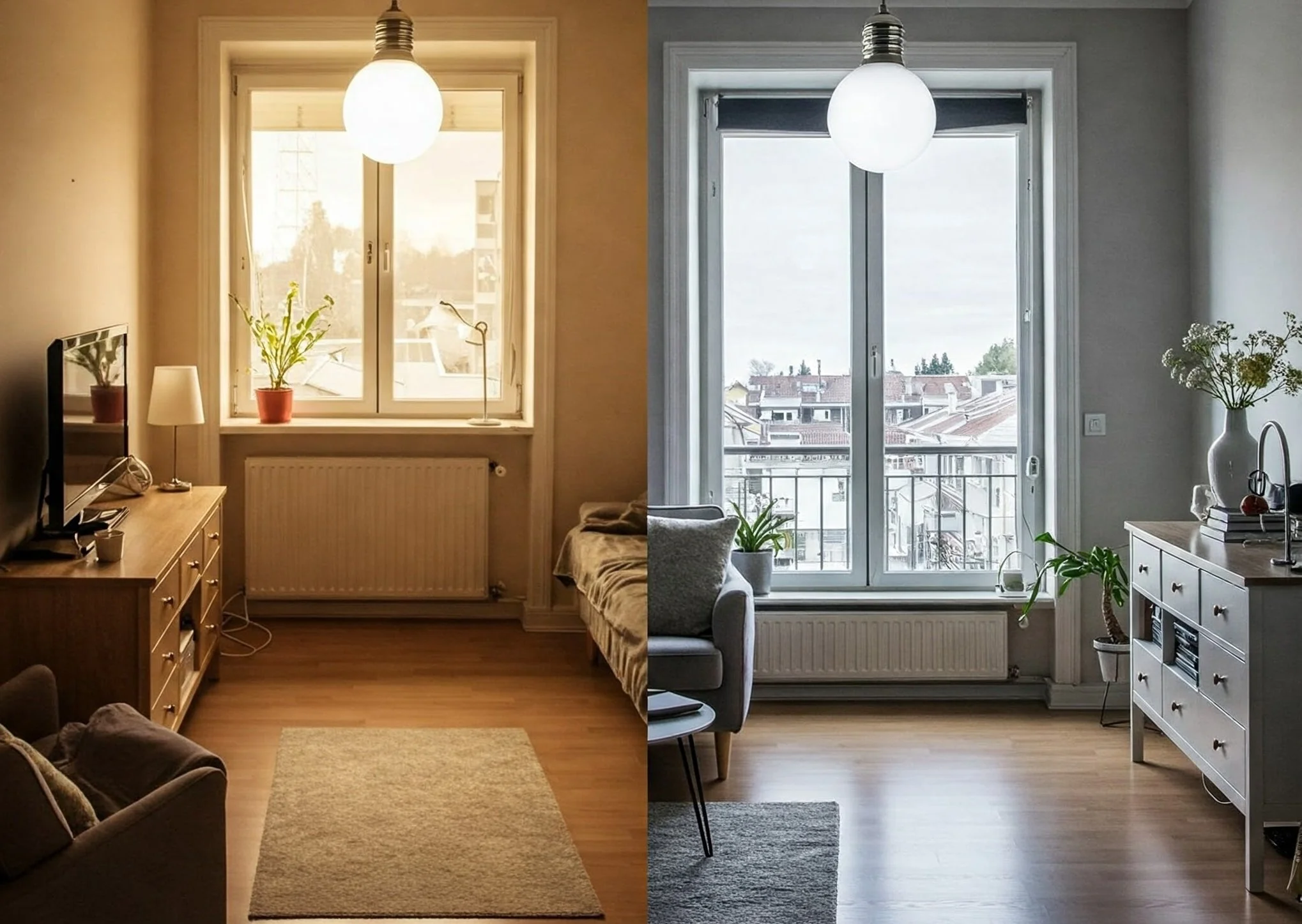How to Wire Two Light Switches: Step-by-Step Guide
Learn how to wire two light switches with this comprehensive step-by-step guide. Discover tools needed, wiring diagrams, and essential tips for a safe and effective installation.
Wiring light switches might sound like a daunting task, but with a little bit of know-how and some basic tools, it’s totally achievable for the average DIY enthusiast! Whether you're looking to control a single light fixture from two different locations or just want to enhance your home’s lighting options, understanding how to wire two light switches can open up a world of convenience and functionality in your home.
In this How to Wire Two Light Switches: Step-by-Step Guide, we’ll walk you through the entire process, from gathering materials to troubleshooting common issues. By the end of this guide, you’ll be well-equipped to tackle this project with confidence. So, let’s get started and shed some light on the wiring process!
Understanding the Basics of Light Switch Wiring
1. Types of Switches
Before diving into the wiring process, it’s essential to understand the different types of switches you may encounter:
Single-Pole Switch: A single-pole switch is the most common type of light switch, designed to control one light fixture from a single location. It features two terminals and allows users to easily turn the light on or off with a simple toggle, making it user-friendly and efficient.
Three-Way Switch: A three-way switch enables you to control a single light fixture from two different locations, making it ideal for hallways, staircases, or large rooms. This type of switch consists of two switches that work together, providing convenience and flexibility in lighting control.
2. Safety First
Wiring can be hazardous, so safety is paramount. Always take the following precautions:
Turn Off Power: Before starting any electrical work, ensure safety by turning off the power at the circuit breaker. This step prevents electrical shock and ensures a safe working environment during the project.
Use a Voltage Tester: Use a voltage tester to verify that the power is off before beginning your work. Testing the wires ensures they are not live, providing an added layer of safety during the project.
Wear Safety Gear: Consider using gloves and safety goggles to protect yourself during the project.
Tools and Materials You’ll Need
Gather these tools and materials before starting:
Tools
Screwdriver: Flathead and Phillips head.
Wire Strippers: For removing insulation from wires.
Pliers: For bending and twisting wires.
Voltage Tester: To check for live wires.
Drill: If you need to make holes for new switch boxes.
Materials
Light Switches: Choose the type you need (single-pole or three-way).
Electrical Wire: Usually 14 or 12-gauge wire, depending on your circuit.
Wire Nuts: For securing connections.
Electrical Tape: For added insulation and security.
Electrical Boxes: If you need to install new switch boxes.
How to Wire Two Light Switches: Step-by-Step Guide
Step 1: Planning Your Wiring Layout
1. Create a Wiring Diagram
Sketch It Out: Before you start, sketch a basic wiring diagram to help visualize the connections. This diagram will clarify how power flows between the switches and the light fixture, ensuring you have a clear understanding of the setup and reducing the likelihood of errors during installation.
Step 2: Prepare the Switch Boxes
1. Turn Off the Circuit Breaker
Safety First: Safety first! Head to your circuit breaker and turn off the power to the specific circuit you’ll be working on. This crucial step prevents electrical shock and ensures a safe environment while you install or repair wiring, allowing you to work with peace of mind.
2. Remove Old Switches (If Applicable)
Disconnect the Old Switches: If you’re replacing existing switches, remove the screws holding them in place, and gently pull them out of the box. Use a voltage tester to ensure the wires are dead.
Step 3: Install the New Switch Boxes
1. Position the Boxes
Choose Locations: Choose the locations for your switches carefully, ensuring they are at a comfortable height and within easy reach. Ideally, switches should be positioned near doorways or entry points, allowing for convenient access while enhancing the overall functionality of your lighting setup.
2. Secure the Boxes
Install the Boxes: Install the boxes according to the manufacturer’s instructions, ensuring they are securely anchored within the wall. Proper installation is crucial for safety and functionality, as it provides a sturdy foundation for your switches and protects the wiring connections from damage or exposure.
Step 4: Run the Electrical Wire
1. Measure and Cut Wire
Get the Right Length: Get the right wire length by measuring the distance between the power source, switches, and the light fixture. Cut the wire accordingly, leaving a little extra for maneuverability. Accurate measurements ensure proper connections and ease of installation, preventing tight or stretched wiring and facilitating a smooth setup.
2. Feed the Wire
Thread the Wire:Thread the electrical wire through the boxes, making sure to leave enough length to work with inside each box. This will facilitate easy connections to the switches and light fixture, ensuring you have ample wire to maneuver without straining the connections during installation.
Step 5: Wiring the Switches
1. Connect the First Switch
Strip the Wire Ends: Strip the wire ends using wire strippers to remove about 3/4 inch of insulation from each wire. This process exposes the metal conductors, ensuring proper connections with the switches and light fixture while maintaining electrical safety and effectiveness in your wiring project.
Attach the Wires: Connect the wires to the switch:
Black Wire (hot): Connect this wire to the bottom terminal of the switch.
Ground Wire (bare or green): Connect this to the green terminal on the switch.
White Wire (neutral): This wire does not connect to the switch but is important for wiring as it will go to the fixture.
2. Connect the Second Switch
Repeat the Process: At the second switch, follow the same steps. The black wire coming from the first switch will connect to the bottom terminal, and the ground wire will connect to the green terminal.
Step 6: Wiring the Light Fixture
Follow the Same Steps: At the light fixture, connect the black wire from the second switch to the black wire of the fixture. Connect the white wires together (the fixture's white wire and the incoming neutral wire), and the ground wire to the fixture's ground wire.
Step 7: Secure All Connections
Twist and Secure: Twist and secure the wire connections using wire nuts to ensure a safe and reliable connection. For added safety, wrap the connections with electrical tape to prevent any exposed wires. This step helps protect against shorts and ensures the longevity of your electrical work.
Step 8: Finish Up
1. Close the Switch and Fixture Boxes
Install the Covers: Once all connections are made, carefully push the wires back into the boxes, ensuring they are neatly tucked away. Secure the switch and fixture covers, taking care not to pinch any wires. This final step completes the installation and enhances the overall appearance of your electrical work
2. Restore Power
Turn the Circuit Back On: Turn the circuit back on by returning to your circuit breaker and restoring power to the circuit you’ve been working on. This final step allows you to test the switches and light fixture to ensure everything is functioning properly and safely after your installation.
Step 9: Test the Switches
Test Functionality: Test functionality by flipping the switches to see if the light works. If it doesn’t illuminate, turn off the power once more and carefully double-check all your connections. This ensures that everything is correctly wired and functioning safely before finalizing your installation.
Conclusion
Wiring two light switches might seem challenging at first, but with this How to Wire Two Light Switches: Step-by-Step Guide, you’re well on your way to achieving a successful installation. Remember to prioritize safety, double-check your connections, and take your time with each step.
With the right tools, a bit of patience, and some careful attention to detail, you can illuminate your spaces with the convenience of multiple switch controls. So, grab those tools and get to work—you’ll be basking in the glow of your handiwork in no time! Happy wiring!
Frequently Asked Questions
1. Can I wire two switches to control one light fixture?
Yes! Using three-way switches allows you to control a single fixture from two different locations.
2. Is it safe to do electrical work myself?
If you have a basic understanding of electrical systems and follow safety precautions, you can safely wire light switches. However, if you’re unsure, it’s best to hire a licensed electrician.
3. How do I know which wire is hot?
Typically, the black wire is the hot wire. If you’re uncertain, use a voltage tester to verify which wire is live.
4. Can I use a single-pole switch for this setup?
No, for wiring two switches to control one light, you need three-way switches to allow for control from both locations.
5. What should I do if the light flickers after installation?
Flickering lights can indicate loose connections or incompatible bulbs. Double-check all connections and ensure you’re using the right type of bulb for your fixture.






























